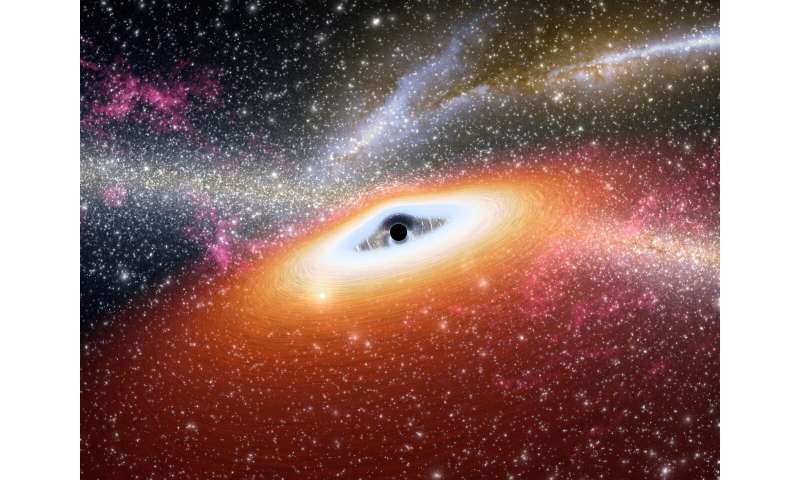Black hole seeds missing in cosmic garden
SEPTEMBER 25, 2019
by Elizabeth Landau, NASA

This artist's conception illustrates one of the most primitive supermassive black holes known (central black dot) at the core of a young, star-rich galaxy. Credit: NASA/JPL-Caltech
In the vast garden of the universe, the heaviest black holes grew from seeds. Nourished by the gas and dust they consumed, or by merging with other dense objects, these seeds grew in size and heft to form the centers of galaxies, such as our own Milky Way. But unlike in the realm of plants, the seeds of giant black holes must have been black holes, too. And no one has ever found these seeds—yet.
One idea is that supermassive black holes—the equivalent of hundreds of thousands to billions of Suns in mass—grew from a population of smaller black holes that has never been seen. This elusive group, the "intermediate-mass black holes," would weigh in somewhere between 100 and 100,000 Suns. Among the hundreds of black holes found so far, there have been plenty of relatively small ones, but none for sure in the intermediate mass-range "desert."
Scientists are working with powerful space telescopes from NASA, as well as other observatories, to track down far-flung objects that fit the description of these exotic entities. They have found dozens of possible candidates and are working toward confirming them as black holes. But even if they do, that opens up a whole new mystery: How did intermediate-mass black holes form?
"What is fascinating, and why people have spent so much time trying to find these intermediate-mass black holes, is because it sheds light on processes that happened in the early universe—what were the masses of relic black holes, or new formation mechanisms for black holes that we haven't thought of yet," said Fiona Harrison, professor of physics at Caltech in Pasadena, California, and principal investigator for NASA's NuSTAR mission, which is managed by the Jet Propulsion Laboratory.
More:
https://phys.org/news/2019-09-black-hole-seeds-cosmic-garden.html
